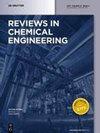未改性废蛋壳作为吸附剂去除水介质中金属离子的数据模式识别
IF 6.6
3区 工程技术
Q1 ENGINEERING, CHEMICAL
引用次数: 0
摘要
近年来,有关应用蛋壳去除水溶液中金属离子的研究成果大幅增加。本文介绍了未经处理的蛋壳从水溶液中吸附金属的不同方面。在所有审查的数据中,预处理程序和测试的吸附参数差异很大,这为结果提供了差异来源。对于未经处理的蛋壳,报告的 BET 表面积范围从 0.07 m2/g 到 8.941 m2/g。颗粒大小与 BET 表面积之间的相关性已得到强调。比较了未经处理的蛋壳的去除率。报告结果表明,蛋壳最适用于去除水溶液中的铅(II)、镉(II)和铜(II)。蛋壳去除主族元素金属离子的能力也得到了证实。虽然结果看起来很有希望,但目前还没有足够的数据来对蛋壳去除其他(主要是过渡)金属离子的效率做出可靠的结论,因此这也是一个可能的研究方向。根据报告的数据,涉及多种去除途径。已对几种蛋壳改性方法和仅使用蛋壳作为部分原材料制造新吸附剂的可能性进行了评估。最后,对已报道的蛋壳改性方法进行了评估,很明显,要比较不同材料作为吸附剂的效果,仅比较材料的吸附能力是不够的。某些利用吸附去除环境水污染的研究需要进一步研究,如水溶液、不同加工用水甚至废水中的金属离子规格。本文章由计算机程序翻译,如有差异,请以英文原文为准。
Pattern identification in data about unmodified waste eggshell application as an adsorbent for metal ion removal from aqueous media
In recent years, a significant increase in the amount of research published about the application of eggshells for the removal of metal ions from aqueous solutions has been observed. The paper presents different aspects of metal adsorption from aqueous solutions on untreated eggshells. Pretreatment procedures and tested parameters for the adsorption differ significantly across all the reviewed data, providing a source of variance for the results. For untreated eggshells, the range of the reported BET surface area is from 0.07 m2 /g to 8.941 m2 /g. Correlation between particle size and BET surface area has been highlighted. Reported removal efficiencies for the untreated eggshell have been compared. Reported results show that eggshell is most employed for the removal of Pb(II), Cd(II), and Cu(II) from aqueous solutions. Eggshell capacity to remove metal ions from the main group elements has also been demonstrated. While results look promising, not enough data are present to make reliable conclusions about its efficiency with other (mainly transition) metal ions – which makes it a possible research direction. Based on the reported data, multiple removal pathways are involved. Several eggshell modification methods and possibilities of creating new adsorbents using eggshells only as a part of the raw material have been assessed. Finally reported eggshell modification methods have been assessed and it is clear that to compare different material’s effectiveness as an adsorbent, comparing only materials adsorption capacities is insufficient. Certain environmental water pollution removal studies using adsorption demand further study, such as metal ion specification in aqueous solution, in different processing water, and even in wastewater.
求助全文
通过发布文献求助,成功后即可免费获取论文全文。
去求助
来源期刊

Reviews in Chemical Engineering
工程技术-工程:化工
CiteScore
12.30
自引率
0.00%
发文量
37
审稿时长
6 months
期刊介绍:
Reviews in Chemical Engineering publishes authoritative review articles on all aspects of the broad field of chemical engineering and applied chemistry. Its aim is to develop new insights and understanding and to promote interest and research activity in chemical engineering, as well as the application of new developments in these areas. The bimonthly journal publishes peer-reviewed articles by leading chemical engineers, applied scientists and mathematicians. The broad interest today in solutions through chemistry to some of the world’s most challenging problems ensures that Reviews in Chemical Engineering will play a significant role in the growth of the field as a whole.
 求助内容:
求助内容: 应助结果提醒方式:
应助结果提醒方式:


